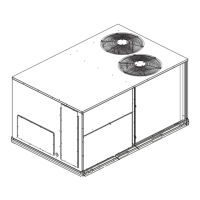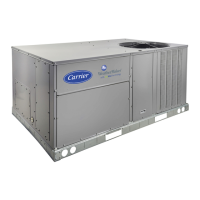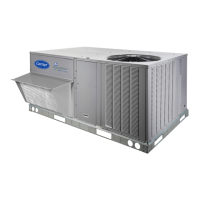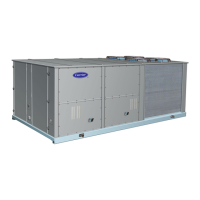1
Controls, Start-- Up, Operation
and Troubleshooting
48/50FC 04---07, 48/50GC 04---06
Single P ackage Rooft op Units
with SystemV u™ Controls Version 1.X
and Puronr (R---410A) Refr ig er ant
C150173
IMPORTANT: This literature covers 48/50FC 04--07 and 48/50GC 04--06 models with SystemVu controls version 1.X (factory--installed
option).
TABLE OF CONTENTS
Page
SAFETY CONSIDERATIONS 2.........................
GENERAL 3.........................................
Conventions Used in This Manual 3......................
BASIC CONTROL USAGE 3...........................
SystemVu Control (factory --installed option) 3..............
SystemVu Interface 3.................................
Accessory Navigatort Display 4........................
System Pilott andTouchPilott Devices 5................
CCN Tables and Display 5.............................
START -- UP 6.........................................
Unit Preparation 6....................................
Refrigerant Service Ports 6.............................
Crankcase Heater 6...................................
Compressor Rotation 6................................
Power Supply 6.....................................
Internal Wiring 6.....................................
Evaporator Fan 6....................................
Condenser Fans and Motors 6...........................
Return--Air Filters 8..................................
Outdoor--Air Inlet Screens 8............................
Accessory Installation 8...............................
Gas Heat (48FC and 48GC) 8...........................
CONTROLS QUICK SET-- UP 8.........................
Control Set Point and Confirmation Log 8.................
Initial Startup 8......................................
Thermostat Control 9.................................
Space T emperature Sensor Control -- Direct Wired
(T--55 or T--56 or T--59) 9.............................
Space Humidistat Control 9............................
Space Relative Humidity Sensor Control 9.................
CCN Communication 9...............................
CCN Linkage Control 9...............................







